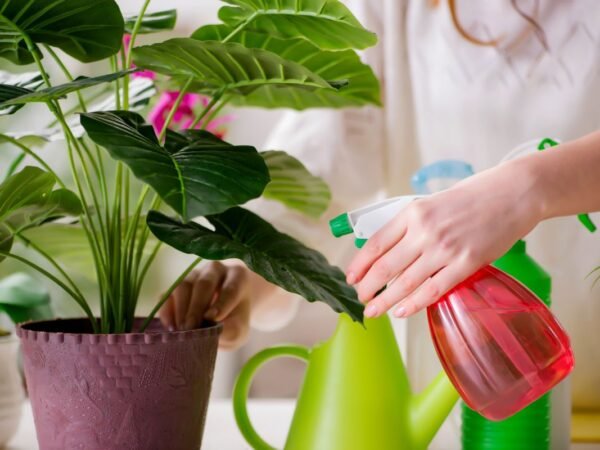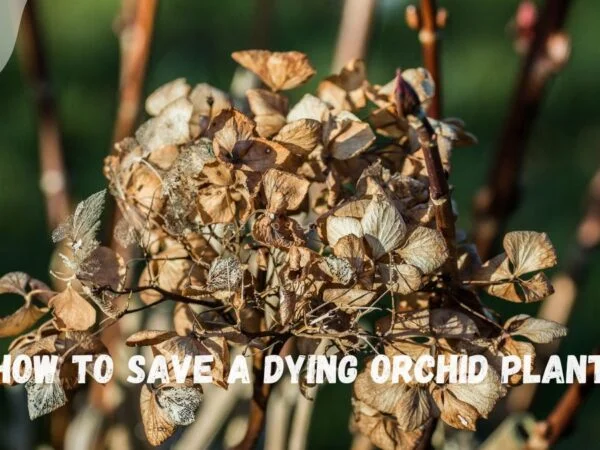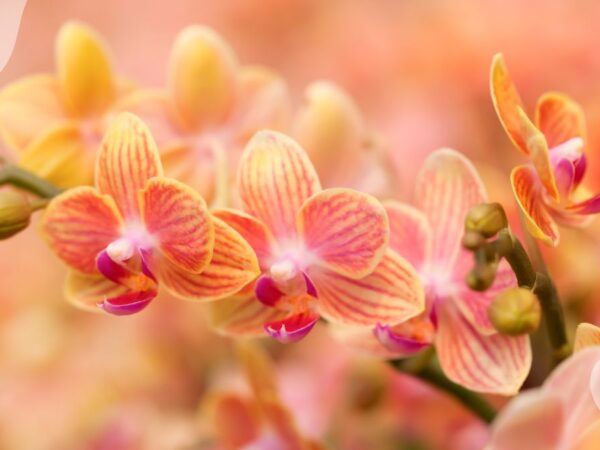Ever wondered about the lifespan of those stunning Phalaenopsis orchids adorning your space indoors? These enchanting blooms, also known as moth orchids, captivate growers with their elegance and longevity. But how long do these beauties actually last?
Phalaenopsis orchids are renowned for their endurance, often gracing our surroundings with their delicate allure for a long time. However, understanding the factors influencing orchid plants' longevity is crucial in nurturing these floral gems. Join us as we unravel the secrets behind prolonging and cherishing the breathtaking presence of these beloved orchids post.
Key Takeaways
-
Regular care: Provide consistent care by watering the orchid once a week and ensuring it receives adequate sunlight to promote a longer lifespan.
-
Optimal Environment: Create an ideal environment for your orchid by maintaining a warm, humid atmosphere and avoiding extreme temperature changes.
-
Proper Potting: Use well-draining potting mix and a suitable pot to ensure proper air circulation and prevent root rot.
-
Encouraging Reblooming: Trim the spike after the flowers have withered, provide a cooler temperature differential, and ample light to encourage the orchid to rebloom.
-
Vigilant Pest Management: Regularly inspect your orchid for pests and diseases, and take prompt action to prevent infestations that can shorten its lifespan.
-
Continuous Learning: Keep exploring advanced tips and techniques to enhance your orchid care skills and maximize the longevity of its blooms.
Understanding Phalaenopsis Orchid Lifespan
Orchid Lifespan
Phalaenopsis orchids, with proper care, can thrive for several years. The lifespan of these delicate flowers is influenced by various factors such as the environment they are placed in and the level of care they receive. Understanding how long phalaenopsis orchids last is crucial for providing them with appropriate care to ensure their longevity.
For instance, a well-maintained phalaenopsis orchid can live for five to ten years or even longer under optimal conditions. Factors such as consistent watering, suitable light exposure, and regular feeding contribute significantly to a healthy and extended lifespan for these stunning flowers.
To illustrate, maintaining an ideal temperature range of 65-75°F (18-24°C) during the day and slightly cooler temperatures at night promotes robust growth and overall health in phalaenopsis orchids. Ensuring adequate humidity levels around 50-70% helps sustain orchid flowers' vitality over time.
Signs of Health
Recognizing the signs of a healthy phalaenopsis orchid is essential for gauging its lifespan. Vibrant green leaves that are firm to the touch indicate good health in these plants. Furthermore, plump roots without any blemishes signify that the plant is thriving.
Moreover, blooming flowers with rich colors and no signs of wilting or discoloration demonstrate the well-being of a phalaenopsis orchid. New leaf growth also serves as an indicator that your plant is flourishing and has strong potential for an extended lifespan when provided with proper care.
Regularly inspecting your orchid for pests like aphids or diseases such as root rot ensures early detection and timely treatment if needed—essential practices to maintain its health throughout its life cycle.
Orchid Care Basics
Watering Guidelines
Phalaenopsis orchids should be watered thoroughly, allowing the orchid roots to dry out between waterings. It's important to use room temperature water to prevent shocking the orchid's delicate roots. The frequency of watering should be adjusted based on environmental conditions and the specific needs of the orchid.
For example, during warmer months or if your home is particularly dry, you may need to water more frequently. On the other hand, in cooler or more humid conditions, you might need to reduce watering frequency. By paying attention to your orchid plants and their environment, you can ensure they receive just the right amount of moisture for healthy growth.
Feeding Orchids
A balanced fertilizer at quarter-strength should be used every other week during active growth periods. This helps provide essential nutrients without overwhelming the plant with too much fertilizer at once.
Consider using specialized orchid fertilizers with higher nitrogen content for robust leaf development and overall healthy growth. However, it's crucial to avoid over-fertilizing as this can lead to salt buildup in the growing medium and damage the delicate orchid roots.
Ideal Conditions for Phalaenopsis Orchids
Temperature and Humidity
Maintaining ideal conditions is crucial for the longevity of phalaenopsis orchids. These delicate plants thrive in daytime temperatures ranging from 70-80°F (21-27°C). It's equally important to provide slightly cooler nights, mimicking their natural habitat. Extremes should be avoided as sudden temperature fluctuations or prolonged exposure to extreme conditions can stress the orchid.
Moderate humidity levels, ideally between 50% to 70%, are essential for phalaenopsis orchids. This level closely imitates the moisture content in their native environment, promoting healthy growth and blooming. However, excessive moisture can lead to root rot, so it's vital to strike a balance.
For instance:
-
Daytime temperatures around 75°F (24°C) with nighttime temperatures dropping by about 10 degrees.
-
Maintaining moderate humidity using a humidifier or pebble tray under the plant pot.
Light and Shade
Phalaenopsis orchids prefer bright, indirect light for optimal growth and flowering. Placing them near an east-facing window often provides suitable lighting conditions while protecting them from direct sunlight that could damage their leaves irreversibly.
It's crucial to monitor seasonal changes as light requirements may vary during different times of the year. During summer months when sunlight is more intense, providing shade during peak hours can prevent light stress on the delicate leaves.
For example:
-
Placing the orchid on a windowsill where it receives gentle morning sun but is shaded from harsh afternoon rays.
-
Using sheer curtains or blinds to filter out excess sunlight without blocking all natural light sources.
Soil and Potting Essentials
Soil for Orchids
Using a well-draining medium is crucial. This can include materials such as bark chips or sphagnum moss, which help prevent waterlogged roots. Traditional potting soil should be avoided because it retains too much moisture, increasing the risk of root rot. Repotting with fresh medium every 1-2 years is essential to provide proper aeration for healthy root growth.
Choosing the right soil helps in maintaining optimal conditions for Phalaenopsis orchids. For instance, using bark chips allows excess water to drain away from the roots, preventing them from becoming waterlogged and prone to rot. On the other hand, sphagnum moss provides good air circulation around the roots while retaining some moisture - striking a balance that promotes healthy growth.
Potting Orchids
Selecting an appropriate pot plays a significant role in ensuring your orchid's health and longevity. The chosen pot should allow for adequate drainage while accommodating the size of the orchid's root system. It's important to repot when necessary, typically after flowering or when the medium breaks down and becomes compacted over time.
The choice of pot influences how long Phalaenopsis orchids last by affecting their overall health and well-being. For example, using a pot with ample drainage prevents water from pooling at the bottom, reducing the risk of root rot due to excessive moisture retention. Repotting after flowering ensures that any damaged or decaying roots are removed while providing fresh growing medium for sustained vitality.
Promoting Orchid Reblooming
Caring for Blooming Orchids
Maintaining consistent care routines is crucial. This involves regular watering, providing adequate light, and ensuring proper ventilation. By doing so, you can support the longevity of the flowers and promote overall plant health. Moving or disturbing blooming orchids should be avoided as this can lead to premature flower drop or bud blast. Monitoring environmental conditions closely is essential to ensure an optimal blooming period.
Consistency in care routines during the blooming phase is vital for supporting the longevity of phalaenopsis orchids' flowers. For example, maintaining a regular watering schedule helps prevent dehydration and wilting of the blooms. Furthermore, providing appropriate levels of sunlight without subjecting the plant to direct harsh rays promotes healthy flowering.
Maintaining a stable environment around your blooming phalaenopsis orchid will contribute significantly to extending its flowering period. Factors such as temperature fluctuations and excessive drafts can stress the plant and cause premature flower drop or bud blast.
Bud Blast Management
Preventing bud blast in phalaenopsis orchids requires attention to several key factors. Sudden changes in temperature should be avoided at all costs as they can trigger bud blast occurrences by causing stress on developing buds. Stable humidity levels are also crucial in minimizing stress on buds during their development stages.
Proper watering practices play a significant role in preventing bud blast in phalaenopsis orchids. Overwatering or underwatering can both lead to issues with budding and flowering; therefore, striking a balance between these two extremes is essential for promoting healthy bloom development.
Maximizing Bloom Longevity
Extending Flower Lifespan
Phalaenopsis orchids can last for several months, but with proper care, you can extend their blooming period even further. To prolong the flower life of your phalaenopsis orchids, it's important to keep them away from ethylene-producing fruits or appliances. Ethylene is a gas that accelerates the aging process in flowers, causing them to wilt and fade more quickly. By avoiding exposure to ethylene sources such as bananas, apples, and ripening fruits, you can help your orchid blooms stay fresh and vibrant for a longer duration.
Removing spent blooms promptly is crucial for redirecting energy into new flower spikes or vegetative growth. When old flowers wither and die off naturally or lose their vibrancy, it's essential to trim them away using clean scissors or pruning shears. This practice encourages the plant to focus its resources on producing new blossoms rather than sustaining dying ones.
Implementing proper feeding practices also plays a significant role in supporting continuous flowering cycles in phalaenopsis orchids. Providing appropriate nutrients, such as a balanced fertilizer formulated specifically for orchids during active growth periods, can help sustain healthy bloom production over an extended period.
Effective Watering Practices
Adjusting watering frequency based on environmental conditions and the specific needs of your phalaenopsis orchid is essential for maintaining prolonged bloom longevity. These plants thrive when provided with consistent moisture levels without being waterlogged. Therefore, ensuring thorough watering while allowing excess water to drain freely from the pot is crucial in preventing root rot—a common issue that can affect overall plant health and blooming capacity.
Consider using clear pots or transparent inner pots when cultivating phalaenopsis orchids as they allow you to monitor root health and moisture levels effectively. Being able to observe the condition of the roots helps prevent overwatering or underwatering—both of which can impact bloom longevity negatively.
Pest and Disease Management
Pest Control
Regularly inspect your phalaenopsis orchids for common pests such as aphids, mealybugs, or spider mites. Use natural pest control methods like neem oil or insecticidal soap before resorting to chemical treatments. Isolate infected plants promptly to prevent pest infestations from spreading throughout your collection.
Prevention is key. By regularly checking the leaves and stems for signs of infestation, you can catch any issues early on before they have a chance to spread. For example, if you notice tiny white specks (mealybugs) or fine webbing (spider mites), taking immediate action can prevent these pests from causing significant damage.
Utilizing natural remedies like neem oil or insecticidal soap provides an effective yet gentle way to combat common pests without harming the delicate blooms of your phalaenopsis orchids. These options are especially beneficial when dealing with indoor plants where chemical treatments may not be ideal due to limited ventilation.
Disease Prevention
Maintain good air circulation around your phalaenopsis orchids to reduce the risk of fungal infections. Practice proper sanitation by removing dead plant material and disinfecting tools between uses. Quarantine newly acquired plants before integrating them into your existing collection as a preventive measure.
Ensuring adequate airflow around your phalaenopsis orchids, especially during humid conditions, can help minimize the likelihood of fungal diseases taking hold in their environment. This step is essential in prolonging the overall health and longevity of these beautiful flowering plants.
Proper sanitation practices play a crucial role in disease prevention for phalaenopsis orchids. By promptly removing any dead leaves or spent blooms and regularly disinfecting gardening tools after each use, you create an environment that discourages harmful pathogens from thriving among your prized plants.
Home Placement and Environment Optimization
Ensuring the ideal placement and environment is crucial for their longevity. To optimize your home's environment for these delicate plants, find a stable location with consistent conditions away from drafts or heating/cooling vents. Placing your phalaenopsis orchids near east-facing windows can provide gentle morning sunlight exposure, promoting healthy growth without the risk of scorching the leaves.
Avoid positioning them near ripening fruits or appliances that emit ethylene gas as this can shorten the flower life of your phalaenopsis orchids. Ethylene-sensitive plants like these require a well-ventilated area free from such gases to thrive optimally.
Monitoring leaf coloration is essential in balancing sunlight exposure for your phalaenopsis orchids. Dark green leaves may indicate insufficient light levels, while reddish leaves could signal excessive light exposure. Rotating your orchid periodically ensures even light distribution across all sides of the plant, preventing uneven growth due to one-sided sun exposure.
Gradually acclimating your orchid when relocating it to areas with different light intensities within your home prevents shock and stress on the plant, further contributing to its overall health and longevity.
Advanced Tips for Orchid Enthusiasts
Optimizing Blooms' Longevity
To extend the lifespan of your phalaenopsis orchids, it's crucial to maintain stable temperature conditions within the recommended range during their flowering periods. This helps in prolonging the bloom duration and ensuring that your orchids stay vibrant for a longer time. Minimizing physical disturbances around blooming plants is essential. Choosing a secure placement location with minimal traffic flow nearby can prevent unnecessary stress on the delicate blooms, promoting longevity.
Proper feeding practices play a significant role in supporting robust flower development and extending bloom periods. Tailoring your feeding routines to meet the specific needs of your phalaenopsis orchids can result in healthier and longer-lasting blooms. By providing them with the right nutrients at the right times, you can ensure that they remain vibrant and beautiful for an extended period.
Pro Tips to Extend Lifespan
Keeping detailed records of care routines is instrumental in extending the lifespan of phalaenopsis orchids. This includes maintaining comprehensive information about watering schedules, feeding regimens, and environmental adjustments made specifically for each individual plant in your collection. By doing so, you'll be able to track what works best for each orchid and make informed decisions about their care based on past experiences.
Engaging with online forums or local gardening communities specializing in growing phalaenopsis orchids can provide valuable insights into best practices from experienced growers worldwide. Learning from others' experiences allows you to gather diverse perspectives on caring for these delicate plants and implement proven techniques that contribute to prolonged bloom durations.
Experimenting with different care approaches while observing how your plants respond individually is another effective strategy for extending the longevity of phalaenopsis orchids. By taking this personalized approach, you can refine your caregiving techniques over time based on real-time observations and tailor your methods according to each plant's unique requirements.
Summary
Congratulations on reaching the end of this comprehensive guide to prolonging the lifespan of your Phalaenopsis orchids! By now, you understand the fundamental care requirements, optimal conditions, and advanced strategies for nurturing these delicate blooms. Remember, maintaining a consistent watering schedule, providing adequate light and ventilation, and repotting when necessary are crucial for ensuring the longevity of your orchids. Keeping an eye out for pests and diseases while implementing proactive measures will contribute to the overall health and resilience of your plants. Now armed with these insights, you're well-equipped to create an environment where your Phalaenopsis orchids can thrive and bloom for an extended period.
Take the knowledge you've gained here and put it into practice. Observe how your orchids respond to these care techniques and make adjustments as needed. With dedication and attention to detail, you'll be able to enjoy the exquisite beauty of your Phalaenopsis orchids for years to come.
Frequently Asked Questions
How long do Phalaenopsis orchids typically last?
Phalaenopsis orchids can live for several years with proper care. With ideal conditions and regular maintenance, they can bloom for several months at a time, providing lasting beauty in your home.
What are the ideal conditions for Phalaenopsis orchids?
These orchids thrive in bright, indirect light and consistent temperatures between 65-85°F (18-29°C). They also require high humidity levels and good air circulation to flourish.
How often should I water my Phalaenopsis orchid?
Water your Phalaenopsis orchid about once a week, allowing excess water to drain from the pot. Ensure that the roots have dried out slightly before watering again to prevent root rot.
What are some common pests and diseases that affect Phalaenopsis orchids?
Common pests include aphids, scale insects, and spider mites. Diseases like root rot and powdery mildew can also be problematic. Regularly inspecting your plant will help you catch any issues early.
How can I promote reblooming in my Phalaenopsis orchid?
After its initial blooming period, trim the flower spike just above a node to encourage new growth. Provide appropriate light exposure and maintain consistent care practices to support reblooming.
Image Source: Paid image from CANVA




